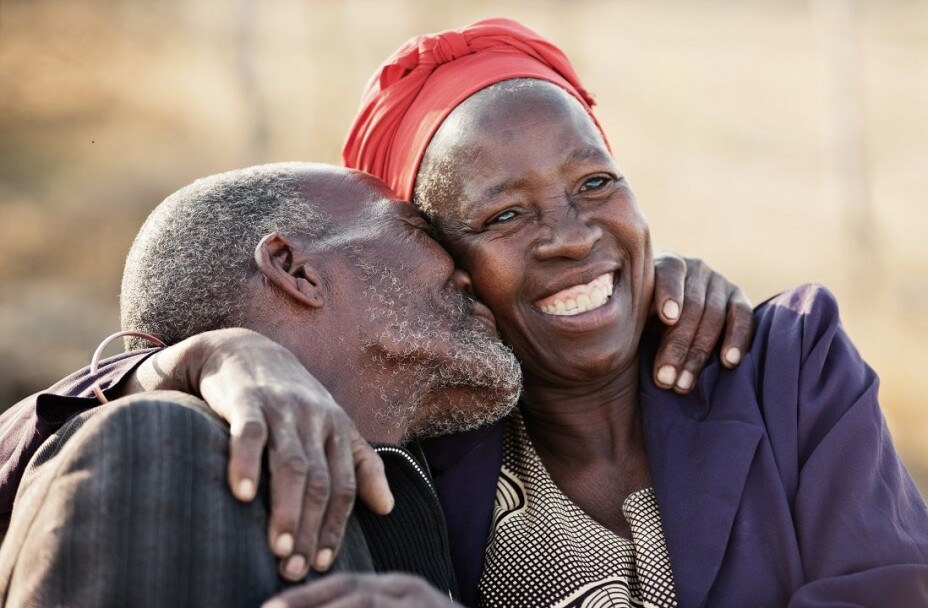This article is produced and financed by NTNU Norwegian University of Science and Technology - read more

Women and men still choose partners like they used to
Men and women choose partners according to different criteria. These are the same almost all over the world and have remained unchanged in the last 30 years, according to a new survey of 14 000 people.
Women seem to care more about security, whereas good looks matter more to men. It used to be that way, and it still is in most places, regardless of the major social changes that have occurred over time.
Women often prefer men older than themselves, and men often want younger women. When the wishes of both parties coincide, they usually appear to be a good match.
These statistics are also true for Norway. Data from Statistics Norway show that when women and men live together, marry for the first time or have children, their age difference is usually about two to three years. That hasn’t changed since the late 1980s.
A new international study has compiled the results of partner selection among heterosexuals with samples from 45 different countries and more than 14 000 people. The study has been published in a new article in Psychological Science.
Solid results over time
The results of the new study are more or less the same as the evolutionary psychologist David Buss found over 30 years ago.
Buss laid the foundation for evolutionary psychology with his studies on gender differences in partner choice. The findings from the 1980s are still valid.
“Evolutionary psychology’s classic studies of gender differences in partner preferences have shown themselves to be robust over time and place,” says Professor Leif Edward Ottesen Kennair at NTNU’s Department of Psychology.

Women and men prioritize differently
In the 1980s, Buss surveyed 37 countries to find out which traits the different cultures found most attractive in a partner of the opposite sex.
Buss found strong similarities between the sexes as well. “Friendliness” and “intelligence” were considered the most attractive qualities by both men and women.
- But in 36 of the 37 cultures, women believed that “good financial prospects” were more important than men did. Women also care more about a partner’s intelligence and good health than men do.
- The priority of appearance was the opposite. In 34 of 37 cultures, men believed that “good looks” were more important than women believed them to be. Men therefore base their choice of partner on appearance to a greater extent, which may be because it is also biologically advantageous to have more attractive children.
Women of all cultures more often preferred older men as partners, while men preferred younger women.
14 000 people surveyed
“The most important aspect of this article is that the study tested whether the findings from David Buss’s classic study withstood the test of time with a large newer cross-cultural selection,” says Professor Mons Bendixen from NTNU’s Department of Psychology.
“The study strengthened the evolutionary psychological explanations. We’ve also gained deeper insight into some of the phenomena associated with partner preferences and what affects gender differences and similarities,” says Professor Kennair.
Both Bendixen and Kennair have contributed to the new study.

Findings are repeatable
In the field of psychology and in several other fields, academic experts sometimes run into a problem when they repeat a previous scientific study but cannot manage to replicate the results. This is called a replication crisis and can cast doubt on research findings.
But Buss’s finding has been possible to repeat and obtain more or less the same result.
Bendixen finds it reassuring to observe that the findings from the earlier cross-cultural studies on partner preferences were largely replicated in the new study.
“Of course, this is because we have a solid theoretical foundation for the research. It provides an opportunity to set up hypotheses about expected outcomes before we test them empirically,” says Bendixen.
Cultural variations do exist, however, and the new article tests a variety of explanations for these variations.
Lots of overlap between genders, too
Not everyone is equally excited about the findings.
“One criticism of the findings that was quickly posted on social media was that there’s extreme overlap between the sexes in their partner preferences. Some thought this should have been better communicated in the article,” says Kennair.
A“But the criticism is unfair in this context, and not something that was undervalued. The research identifies similarities, overlaps and differences.”
“It’s true that the differences are what have received the most arguments against them over the years since Buss published his first article. That makes this kind of criticism rather polemical. It’ll be exciting to see who gives the most balanced description of these findings going forward,” he says.
Bendixen agrees with Kennair’s statement.
“The point of the article is to see if the gender differences observed in earlier cross-cultural studies were reproducible. To a great extent, they are. However, the factors previously found to be associated with gender differences are only partially supported here. In this sense, input on statistical overlap between the sexes is totally irrelevant,” Bendixen says.
By way of analogy, Bendixen uses gender differences in height, where men and women overlap about 50 per cent, but no one would claim that men are not – on average – taller than women.
Reference:
Kathryn V. Walter et.al: Sex Differences in Mate Preferences Across 45 Countries: A Large-Scale Replication. Article in Psychological Science, March 2020. DOI: 10.1177/0956797620904154
———
Read the Norwegian version of this article at forskning.no


































